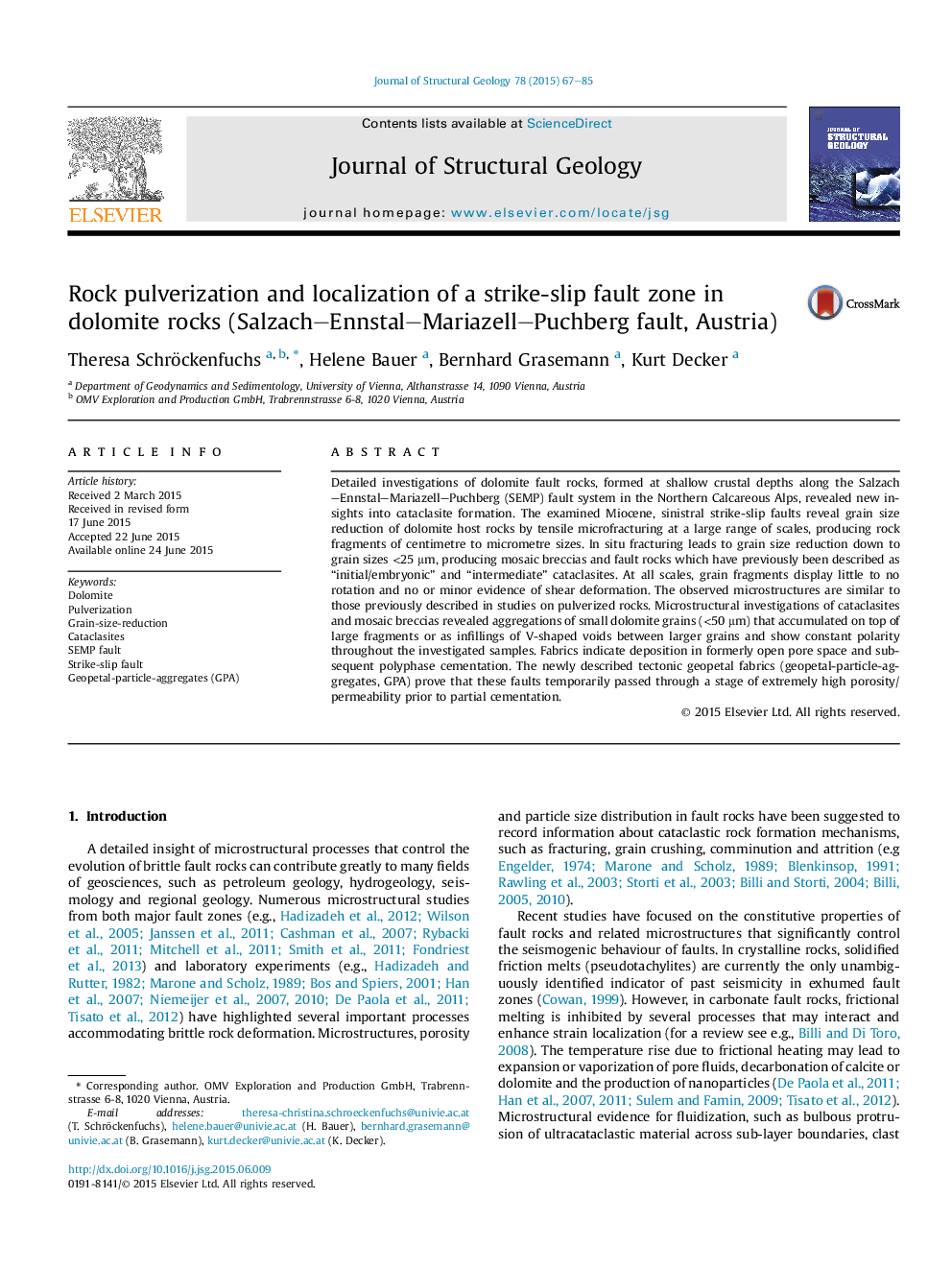| Article ID | Journal | Published Year | Pages | File Type |
|---|---|---|---|---|
| 4733010 | Journal of Structural Geology | 2015 | 19 Pages |
•Initial cataclasites are not dominated by “cataclasis” in the strict sense.•The main formation mechanism for initial cataclasites is in-situ fracturing.•Studied in situ fractured rocks show similar features to “pulverized” rocks.•Fragment seams decouple deformation in intermediate cataclasites.•Geopetal-particle-aggregates (GPA) represent a new way up criterion.
Detailed investigations of dolomite fault rocks, formed at shallow crustal depths along the Salzach–Ennstal–Mariazell–Puchberg (SEMP) fault system in the Northern Calcareous Alps, revealed new insights into cataclasite formation. The examined Miocene, sinistral strike-slip faults reveal grain size reduction of dolomite host rocks by tensile microfracturing at a large range of scales, producing rock fragments of centimetre to micrometre sizes. In situ fracturing leads to grain size reduction down to grain sizes <25 μm, producing mosaic breccias and fault rocks which have previously been described as “initial/embryonic” and “intermediate” cataclasites. At all scales, grain fragments display little to no rotation and no or minor evidence of shear deformation. The observed microstructures are similar to those previously described in studies on pulverized rocks. Microstructural investigations of cataclasites and mosaic breccias revealed aggregations of small dolomite grains (<50 μm) that accumulated on top of large fragments or as infillings of V-shaped voids between larger grains and show constant polarity throughout the investigated samples. Fabrics indicate deposition in formerly open pore space and subsequent polyphase cementation. The newly described tectonic geopetal fabrics (geopetal-particle-aggregates, GPA) prove that these faults temporarily passed through a stage of extremely high porosity/permeability prior to partial cementation.
